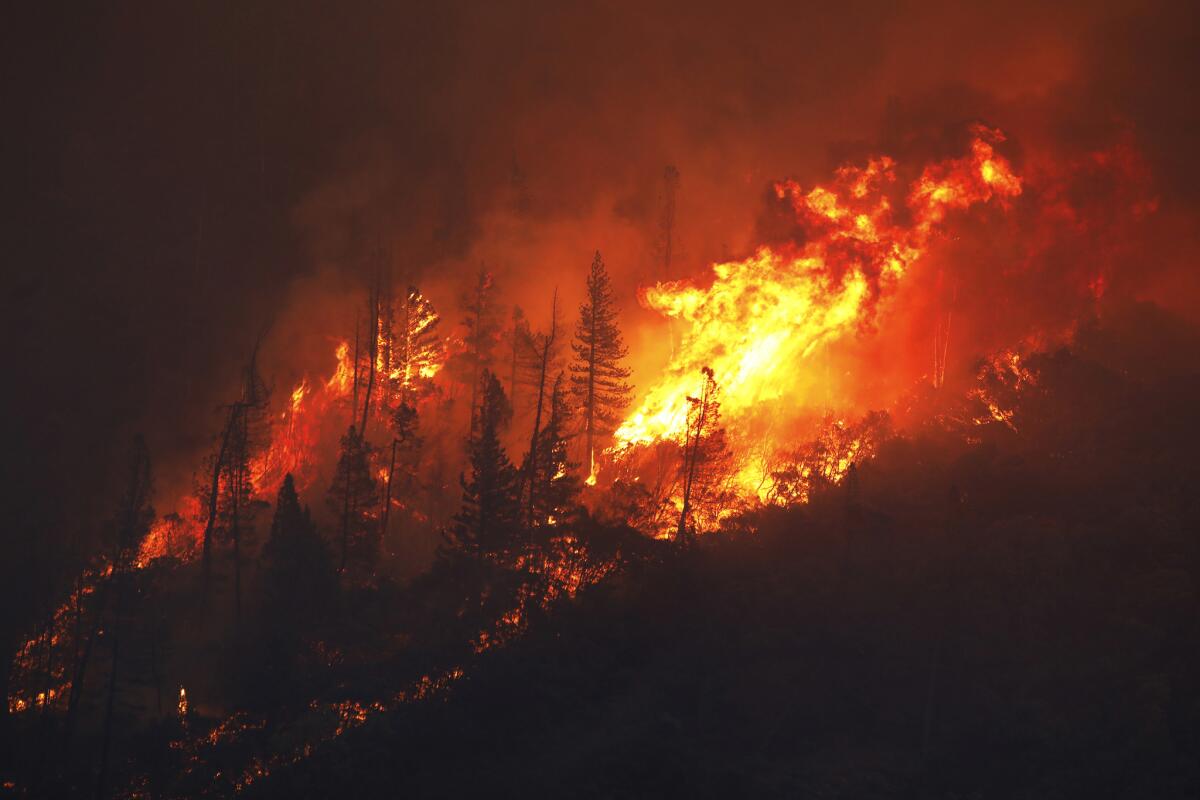PG&E rebuts WSJ story that linked power line upgrade delays to Camp fire

- Share via
PG&E Corp. told a judge it “strongly disagrees” with a Wall Street Journal story suggesting that the utility knew its equipment near the ignition point of California’s deadliest wildfire badly needed upgrades and nonetheless deferred maintenance.
The company’s response, filed Wednesday, was ordered this month by a federal judge who demanded a “fresh, forthright statement owning up to” the accuracy of the article.
The utility is under criminal investigation in Butte County over the deadliest fire in the state’s history. The Camp fire, which raged in the northern part of the state for two weeks in November, killed 85 people, destroyed the town of Paradise and prompted Pacific Gas & Electric to file for bankruptcy. The California Department of Forestry and Fire Protection concluded that the utility’s equipment caused the Camp fire.
In the rebuttal to the Journal article provided to the judge, PG&E acknowledged that it had proposed replacing 60 towers on the line that runs through Butte County where the fire started. But the company said that was for work required to meet federal standards and that the scope of the project didn’t target the particular transmission tower where the power line failed and the fire started. It also said that from 2014 to 2017, only a small portion of the fires caused by the utility were sparked by transmission lines.
A Wall Street Journal spokesman said the newspaper is reviewing the filing.
U.S. District Judge William Alsup has said PG&E’s failure to cut and trim vegetation and branches was a cause of some fires in Northern California in 2017 and 2018. He is overseeing the company’s probation after it was convicted in 2016 of safety violations stemming from a 2010 gas line explosion in San Bruno, Calif., that killed eight people.
Alsup’s July 10 order also cited an ABC News report about recent political campaign contributions and demanded that the company disclose the full amounts and recipients of the donations. He also demanded an explanation as to why $5 billion in dividend payments took precedence over managing vegetation that posed a fire threat.
PG&E said in 2017 and 2018 that it made political contributions of $5.3 million, paid for by shareholders and not money from customers.
Responding to Alsup’s concerns about dividend payments, the utility said revenue from customers isn’t sufficient to support operations and infrastructure. PG&E needs to issue dividend payments to raise money from capital markets, it said.
“Dividends facilitate investment in infrastructure, because the steady payment of dividends is essential to raising new capital from investors,” PG&E said.
According to the Journal article, a year before the Camp fire, PG&E conceded to a lawyer for California that it needed to undertake many projects to prevent failures of its power transmission system and that it knew parts were outmoded.
Related to the Camp fire specifically, “the company knew that 49 of the steel towers that carry the electrical line that failed needed to be replaced entirely,” the Journal reported. The utility only started detailed inspections of transmission lines after the fire, according to the article.
PG&E had delayed replacement of the towers on the line for a variety of reasons including “engineering, operational and permitting” issues, the utility said in its filing. The company said it needed to replace the towers to comply with federal clearance standards for its lines and the work wasn’t ”to identify and repair or replace worn or broken parts.”
PG&E also denied that it began close inspections of its transmission lines only after the Camp fire, saying in the filing that it conducted ground inspections of overhead lines at least every five years and aerial patrols every year when a detailed inspection wasn’t done.
More to Read
Inside the business of entertainment
The Wide Shot brings you news, analysis and insights on everything from streaming wars to production — and what it all means for the future.
You may occasionally receive promotional content from the Los Angeles Times.










